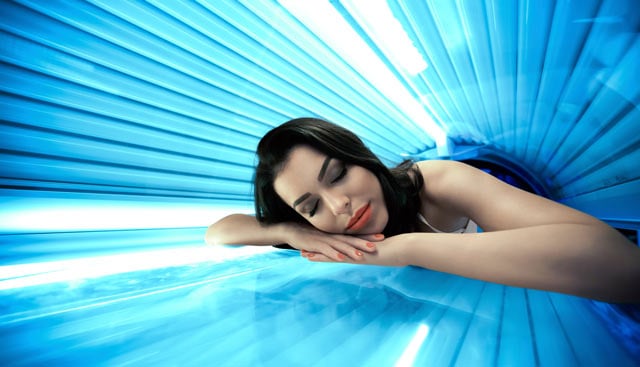
Are Tanning Beds Safer Than Tanning Outdoors?
Ultraviolet (UV) radiation is a known carcinogen that has been directly linked to melanoma and other types of skin cancer. It can also increase the risk of a benign mole undergoing cancerous changes. Cancer-causing UV light comes from two main sources: the sun and indoor tanning devices.
The amount of UV radiation emitted by indoor tanning devices – including beds, booths, lamps, bulbs and the like – is generally on par with that generated by the sun. However, in some cases, it is even more intense. That’s because indoor tanning devices are designed to deliver a highly concentrated "burst" of UV radiation over a short period of time. Additionally, the intensity can vary based on the type and age of the light sources used.
Here are some other factors that make indoor tanning especially dangerous:
- Developing a “base tan” offers no protection – Many people tan indoors before vacationing in a sunny destination based on a mistaken belief that having a “base tan” will protect their skin from sun damage. This is completely false. Any type of tanning – whether or not it involves a prior sunburn – increases the risk of skin cancer. In fact, the skin darkens as the body produces melanin in response to UV exposure, which is the body’s attempt to protect itself from further damage. Therefore, any tan, no matter how attractive it may seem to some, is a sign of skin damage.
- Indoor tanning can be addictive – Even though they may not realize it, many people who tan indoors year round are affected by seasonal affective disorder (SAD). Also known as “winter blues” and “summertime sadness,” SAD is a type of depression that is related to changing seasons. One treatment that is often effective for SAD is light therapy (phototherapy). When delivered properly, phototherapy emits a safe amount of visible, non-UV light. Indoor tanning devices are a dangerous way to achieve the same result, and some people unwittingly continue to use them, even to the point that they become addicted, for that specific reason.
- Skin protection is discouraged – When spending time outdoors, many people know that they should apply broad-spectrum sunscreen that is rated SPF 30 or higher. On the other hand, because indoor tanning devices are designed to maximize exposure, users are encouraged to apply special lotions that are formulated not to protect the skin, but rather to boost the effects of the UV rays. In fact, many are marketed as a way to “achieve a tan without sitting in the sun for hours.”
Melanoma – the most aggressive form of skin cancer – is currently the most common type of cancer diagnosed in young adults. Many experts believe that this trend is due, in part, to the popularity of indoor tanning among this group. At Moffitt Cancer Center, we believe that education and research play key roles in preventing and ultimately finding a cure for melanoma. Toward that end, we’ve established the Donald A. Adam Comprehensive Melanoma Research Center for Excellence with a goal to contribute to the understanding, prevention and treatment of melanoma.
To learn more skin cancer risks and prevention, call 1-888-MOFFITT or complete a new patient registration form online. No referrals are required.
